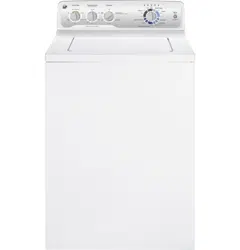Documents: Go to download!
User Manual
- Owner's manual - (English, Spanish)
- Quick specs - (English)
- About the control panel—for models with START button
- About washer features
- Loading and using the washer
- Care and cleaning of the washer.
- Before you call for service...
Table of contents
USER MANUAL
About the control panel—for models with START button
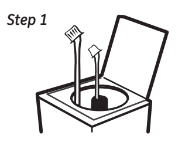
- Add fabric softener (on models with a fabric softener dispenser); see page 6 for details.
- Add detergent. GE recommends the use of High Efficiency
 detergents in your energy efficient washer
detergents in your energy efficient washer
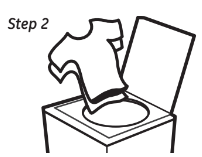
- Add items
- Close lid.
NOTE: Washer will not start to fill with lid open on Auto Load sensing settings (on some models).
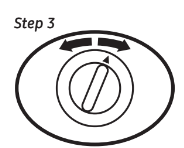
- Select load size and other wash options, including Fabric Softener option.
- Select wash cycle.
- Select OPTIONS.
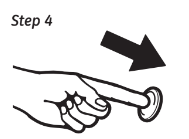
- Push START
Quick Start Guide

Controls
A.Load Size (on some models)
- Add
 detergent to the bottom of the basket and fabric softener to the dispenser prior to loading clothes.
detergent to the bottom of the basket and fabric softener to the dispenser prior to loading clothes. - Loosely load items in the washer basket. Overloading may negatively impact wash performance. Adjust the load size accordingly.
- Make the load selection: automatic load sensing (on some models)
AUTOMATIC LOAD SENSING (on some models)
- For convenience, best performance and optimal efficiency, select AUTOMATIC LOAD SENSING on models that are so equipped. This selection automatically provides the correct amount of water suited to the size and type of load placed in the unit.
- If you prefer to manually select the water level, select SMALL through SUPER. While AUTOMATIC LOAD SENSING is best for most loads and general washing, you may want to manually select the load size for specialty items such as bulky, lightweight comforters or pillows, where you want to ensure a larger water level is applied. Manual load size selections should be made for wet items placed in the washer, such as soaked towels or garments.
- The washer will not fill with water when automatic load sensing is selected if the lid is opened. When the lid is closed the machine is able to begin filling with water in order to sense the load size.
OR
A. Signal (on some models)
- Select for an end of cycle signal.
B. Temperature
Select the water temperature for the wash and rinse cycles. Always follow fabric manufacturer's care label or instructions when laundering. PerfecTemp senses the incoming water temperature and adjusts the fill water to obtain a more precise temperature range for all wash temperatures except TAP COLD. For example, in a COLD wash selection, some warm water may be added to reach a temperature needed to better dissolve detergents. Often, detergents are not completely dissolved in very cold water, especially in cooler climates. During winter months, when the water entering your home is colder, or for locations with very cold water year round, use the PerfecTemp COLD to help dissolve powdered detergents and to improve the cleaning of your clothes.
The TAP COLD feature turns the PerfecTemp feature on your washer off and uses your household tap water temperature for a COLD wash. This can provide energy savings by reducing the amount of hot water used in your wash.
C. Options
Autosoak Option (on some models)
This option begins with a brief agitation, soaks for a specified period of time, then moves through the rest of the cycle automatically. On some models, this option is located on the Cycle Selector knob.
2nd Rinse Option (on some models)
When you use extra detergent or bleach to clean heavily soiled clothes, use the 2nd Rinse option to better remove additional residues.
Extended Spin Option (on some models)
Use this option to extract more water from your clothes. Clothes will be drier when this option is selected and will dry more quickly in your dryer.
Fabric Softener and Power Rinse
Set this option when adding fabric softener to the washer or to select the enhanced Power Rinse.
NOTE: Do not use fabric softener dispensing balls with this washer. They do not work correctly in high-efficiency washers.
D. Status Indicator Lights
The Cycle Indicator Lights show what stage the washer is in. When the Selector knob is set to a new cycle, the Indicator Lights will flash momentarily, showing what stages the cycle will go through. On models without an AUTO SOAK option, the SOAK light will not light up.

E. Wash Cycle-Cycle Selector Knob
The wash cycle controls the length and intensity of the washing process. The knob can be turned in either direction. Turning the Cycle Selector knob after starting a cycle will stop the washer and reset the cycle to the new selection. Press START to begin the new cycle selection.
WHITES For heavy to lightly soiled cottons, household linens, work and play clothes. This cycle provides the best overall cleaning and with the normal soil setting should be used for most everyday items. Provides a high speed spin.
PREWASH For removing surface dirt from heavily soiled clothes. Make sure to follow with a regular wash cycle.
COLORS For non-colorfast clothes and blends or items that are labeled for cold wash. Provides a regular wash with periods of soak and a high speed spin.
PERMANENT PRESS For wrinkle-free and permanent press items and knits. Provides a regular wash with periods of soak and a low speed spin.
DELICATES For lingerie and special-care fabrics with light soil. Provides an extra gentle wash and a low speed spin.
HAND WASH For items labeled hand washable with light soil. Provides an extra low speed spin.
SPEED WASH For small loads of lightly soiled items that are needed in a hurry. Provides a high speed spin.
DRAIN & SPIN OR SPIN ONLY For draining the tub and spinning water out of the clothes. Provides a high speed spin.
TOWELS & SHEETS Provides periods of agitation and soak tailored for washing towels and sheets. Provides a regular wash and a high speed spin.
JEANS For washing medium to lightly soiled jeans. Provides a gentle wash and a high speed spin. (For heavily soiled work jeans, use WHITES cycle.)
QUICK RINSE Rinses and spins non-soiled items where a rinse only is desired. Provides a high speed spin.
F. START
Press START to begin the cycle. Pressing START again will PAUSE the cycle and the Cycle indicator light will blink.
To continue the cycle, press START again or close the lid. If machine is paused more than 24 hours, the cycle will be cancelled. To stop the cycle, hold the button for 3 seconds. If water remains in the machine, select the DRAIN & SPIN OR SPIN ONLY cycle to drain tub and spin water out of the washer tub.
Raising the lid will stop agitation or spin action but does not pause the cycle.
About washer features
The Fabric Softener Dispenser
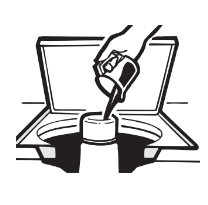
The agitator cap fits into the top of the agitator accidentally comes off, simply put it back on
The fabric softener dispenser automatically releases liquid fabric softener at the proper time during the cycle.
Do not stop the washer or raise the lid during the first spin. This will cause the dispenser to empty too soon.
To use, follow these steps:
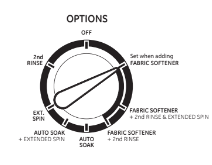
- Make sure dispenser is securely attached to agitator.
- Use only liquid diluted fabric softener. Pour into dispenser, using amount recommended on package.
Never pour fabric softener directly on clothes. It may stain them.
3.Add water to dispenser until it reaches the If it maximum fill line.
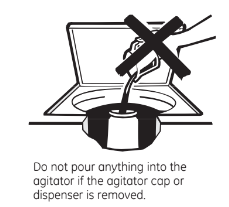
4. Select FABRIC SOFTENER setting knob to activate the cycle.
Cleaning the Fabric Softener Dispenser (on some models)

- Remove the dispenser from the top of the agitator.
- Separate the dispenser cup from the cover by grasping the top and pushing down on the inside of the cup with your fingers. Dispenser cup will pop free from the cover.
- To clean the dispenser, soak both the dispenser cup and the dispenser cover in the following solution:
- 1 US gallon (3.8 liters) warm water
- 1/4cup (60 ml) heavy-duty liquid detergent
- 1 cup (240 ml) bleach
4. If necessary, loosen buildup with a clean, soft cloth after soaking. Do not use a stiff brush; you may roughen the surface of the dispenser.
5. Rinse and reassemble dispenser. Place dispenser back on the agitator.
Liquid Bleach Funnel

The water fill dilutes liquid chlorine bleach as the washer fills for the wash cycle.
- Check clothing care labels for special instructions.
- Measure liquid bleach carefully, following instructions on the bottle.
- Never pour undiluted liquid chlorine bleach directly onto clothes or into the wash basket.
- Do not pour powdered bleach into bleach funnel.
3. Before starting the washer, pour measured amount of bleach directly into bleach funnel. Avoid splashing or over-filling dispenser. If you prefer to use powdered bleach, add it into the wash basket with your detergent.
- Do not mix chlorine bleach with ammonia or acids such as vinegar and/or rust remover. Mixing can produce a toxic gas which may cause death.
Loading and using the washer
Always follow fabric manufacturer's care label when laundering.
 Sorting Wash Loads
Sorting Wash Loads
Sort by color (whites, lights, colors), soil level, fabric type (sturdy cottons, easy care, delicates) and whether the fabric produces lint (terry cloth, chenille) or collects lint (velveteen, corduroy).
 Proper Use of Detergent
Proper Use of Detergent
Add detergent and fabric softener before adding items so that the detergent can work effectively. Using too little or too much detergent is a common cause of laundry problems.
Use less detergent if you have soft water, a smaller load or a lightly soiled load.
For spots, apply pre-treatment to items as recommended on the product label. Application should be made in the basket to prevent overspray which may cause the coloring on the lid or graphics to fade.
GE recommends the use of High Efficiency detergents in your energy efficient washer.
HE detergents are formulated to work with low water wash and rinse systems. HE detergents reduce the oversudsing problems commonly associated with regular detergents.
When using high efficiency or concentrated detergents, consult the product label to determine amount required for optimum performance. Excessive detergent will negatively impact wash performance.
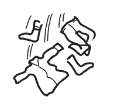 Loading the Washer
Loading the Washer
Load dry items loosely in the washer basket. For best results, load items evenly and loosely around the outside of the basket. To add items after washer has started, lift the lid and submerge additional items around the outside of the basket.
- Do not place large items across the agitator. Load them around the outside of the basket.
- Do not wash fabrics containing flammable materials (waxes, cleaning fluids, etc.).
- Washer will not agitate or spin with the lid up, however the timer will continue to run.
Care and cleaning of the washer.
Wash Basket: Leave the lid open after washing to allow moisture to evaporate. If you want to clean the basket, use a clean, soft cloth dampened with liquid detergent; then rinse. (Do not use harsh or gritty cleaners.)
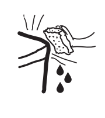
Fill Hoses: GE recommends changing the hoses every 5 years.
Exterior: Immediately wipe off any spills. Wipe with damp cloth. Try not to hit surface with sharp objects.
Interior: The occasional use of a cycle that contains bleach will keep the inside of the washer clean.
Moving and Storage: Ask the service technician to remove water from drain pump and hoses. See the Installation Instructions packed with product for information on how to reinstall the shipping rod to keep the tub stationary when moving the washer.
Long Vacations: Be sure water supply is shut off at faucets. Drain all water from hoses if weather will be below freezing.
Before you call for service...
Troubleshooting Tips
| WATER | Possible Causes | What To Do |
| Water level seems low | This is normal | Water may not cover the top level of the clothes. This is normal for this high-efficiency washer. |
| Water fills and drains at the same time | Drain stand pipe is too low | The drain stand pipe must be above 30". |
| Too many suds |
Too much detergent Type of detergent |
Measure your detergent carefully. Use less soap if you have soft water, a smaller load or a lightly soiled load. Switch to HE Try less detergent. |
| Water leaks |
Using too much detergent in washer Type of detergent |
Use less detergent. Use less soap if you have soft water, a smaller load or a lightly soiled load. Switch to HE  detergent. detergent.Make sure hose connections are tight at faucets and rubber washers are installed. Make sure end of drain hose is correctly inserted in and secured to drain facility. Check household plumbing. You may need to call a plumber. Make sure drain hose is fully seated in back of washer and that the two retaining screws are fully seated. Make sure drain hose does not make contact with the wall. May cause excessive wear on the hose. Tighten hoses at the faucets and turn the water off after each use. Check condition of the fill hoses; they should be replaced every 5 years. |
| Water temperature seems incorrect | Cooler water temperatures provide improved energy efficiency Water supply is turned off or improperly connected Water valve screens are stopped up Cool/Cold water when selecting Hot House water heater is not set properly |
New laundry detergents have been formulated to work with cooler water temperatures without affecting wash performance. Turn both hot and cold faucets fully on and make sure hoses are connected to correct faucets. Turn off the water source and remove the water connection hoses from the upper back of the washer. Use a brush or toothpick to clean the screens in the machine. Reconnect the hoses and turn the water back on. This is normal. PerfecTemp senses water temperature and optimizes for best results. Cold water is added periodically when hot is selected. Make sure house water heater is delivering water at 120°F-140°F (48°C-60°C). |
| Water pumped out before cycle is complete | Lid lifted or cycle was put in pause for over 24 hours | Reset cycle. |
| Water won't drain | Drain hose is kinked or improperly connected |
Straighten drain hose and make sure washer is not sitting on it. Top of drain outlet should be less than 6 ft (1.8 m) above floor. |
| Washer pauses during wash cycle | The PREWASH Cycle was chosen | This is normal. The washer alternates between agitate and soak during these cycles to get your clothes cleaner with less wear. |
| Washer pauses during spin cycle | This is normal |
The washer may pause during the spin cycle to remove soapy water more efficiently. |
| OPERATION | Possible Causes | What To Do |
| Washer won't operate | Washer is unplugged Water supply is turned off Controls are not set properly Lid is open-safety feature prevents agitation and spinning when lid is up Circuit breaker/fuse is tripped/blown Electronics need to be reset START was not pressed Lid magnet missing |
Make sure cord is plugged securely into a working outlet. Turn both hot and cold faucets fully on. Check controls. Check house circuit breakers/fuses. Replace fuses or reset breaker. Washer should have a separate outlet. Unplug washer, wait 2 minutes, plug back in and press START. Press START. |
| Time not shown on display | Unit filling | This is normal. Estimated time remaining is updated during fill time |
| Movement inside machine when shut off | Shifting mechanism is disengaging the motor | When the machine is manually turned off, the shifter will disengage the motor before completely shutting down. If lid is raised before the motor is disengaged, it will resume when lid is closed. |
| PERFORMANCE | Possible Causes | What To Do |
| Clothes too wet | Incorrect cycle select Wash load out of balance |
Make sure the cycle selected matches the load you are washing. Some fabrics will feel wetter when rinsed with cold water. Redistribute load in washer and run through Drain & Spin cycle. |
| Colored spots | Incorrect use of fabric softener Dye transfer |
Check fabric softener package for instructions and follow directions for using dispenser. Make sure you have selected the Fabric Softener option. Pretreat stain and rewash. Sort whites or lightly colored items from dark colors. |
| Grayed or yellowed clothes | Detergent amount Hard water Water is not hot enough Washer is overloaded Detergent is not dissolving Dye transfer |
Be sure to follow detergent manufacturer's directions. Use a water conditioner or install a water softener Make sure water heater is delivering water at 120°F-140°F (48°C-60°C). Loosely load clothes in the washer basket. Adjust load size based on item size and material. For best results, load items around the outside of the basket. Add detergent before you load items. Sort clothes by color. If fabric label states wash separately, unstable dyes may be indicated. |
| Lint or residue on clothes | Clothes are air or line dried Incorrect sorting Washing too long Detergent not dissolving Overloading Incorrect use of fabric softener |
Separate lint producers from lint collectors. Wash small loads for a shorter time than larger loads Add detergent before you load items. Try a liquid detergent. Use warmer water temperature. Loosely load clothes in the washer basket. Adjust load size based on item size and material. For best results, load items around the outside of the basket. Check fabric softener package for instructions and follow directions for using dispenser. Make sure you have selected the Fabric Softener option. |
| Pilling | Result of normal wear on poly-cotton blends and fuzzy fabrics | While this is not caused by the washer, you can slow the pilling process by washing garments inside out. |
| Snags, holes, tears, rips or excessive wear |
Pins, snaps, hooks, sharp buttons, belt buckles, zippers and sharp objects left in pockets Undiluted chlorine bleach |
Fasten snaps, hooks, buttons and zippers. Remove loose items like pins, objects in pockets and sharp buttons. Turn knits (which snag easily) inside out. Check bleach package instructions for proper amount. Never add undiluted bleach to wash or allow clothes to come in contact with undiluted bleach. Rinse items that may have chemicals on them before washing. |
| Wrinkling |
Improper sorting Overloading or incorrect water level Incorrect wash and dry cycles Repeated washing in water that is too hot |
Avoid mixing heavy items (like work clothes) with light items (like blouses). Try a fabric softener. Loosely load clothes in the washer basket. Adjust load size based on item size and material. Match Cycle selection to the type of fabric you are washing (especially for easy care loads). Wash in warm or cold water. |
| SOUNDS | Possible Causes | What To Do |
| Metallic clicking" | Shifter mechanism is engaging or disengaging | The drive system will engage at the start of agitate and disengage when agitate is complete. This occurs multiple times during the wash. |
| Back and forth "swoosh" or light "clicking" sound during agitate | Electric motor reversing direction | This machine has a drive system that doesn't use gears. This sound is the motor rotating back and forth to clean your laundry. |
| Quick short agitation sounds at end of agitate | Clothing redistribution | At the end of agitate, the motor makes short agitation strokes to redistribute the load. |
| Click" when water stops filling | Relay switch | • The relay makes a click sound when activated. The water level activates the relay and stops filling |
| "Clicking" behind Control Panel during fill | Automatic Temperature Control Valve | • Two valves mix cold and hot water. The "clicking" is when either valve turns on or off to raise or lower the fill water temperature. |
| Water flow changes during fill | Automatic Temperature Control Valve | Two valves mix cold and hot water. The flow changes when either valve turns on or off to raise or lower the fill water temperature. |
| Motor "whining up" or "coasting down" in spin | Motor ramping up/down during spin cycle | The motor will speed up incrementally during the spin cycle. When spin is complete, it will coast until it stops. |
| "Humming" | Water drain pump | The drain pump will make a humming sound when pumping out water after agitation stops and continue until spin is complete. |
| Gurgling" | Water drain pump | When the pump starts drawing in air, It starts to gurgle. The washer should then begin spinning and the sound will continue until it is done spinning. |
| Water "swishing" | This is normal | Water swishing while the unit is agitating is normal, especially with smaller loads. |
| Washer is noisy | Washer is uneven Shipping rod is still assembled in the unit |
To level the front of the washer, adjust the front leveling legs by rotating the individual leg in the proper direction for up or down. To level the back of the washer, lift the back of the machine 4" (11 cm) and set down. To remove the shipping rod from the washer, pull the yellow tag and remove the attached rod from the bottom right hand side of the washer. |
